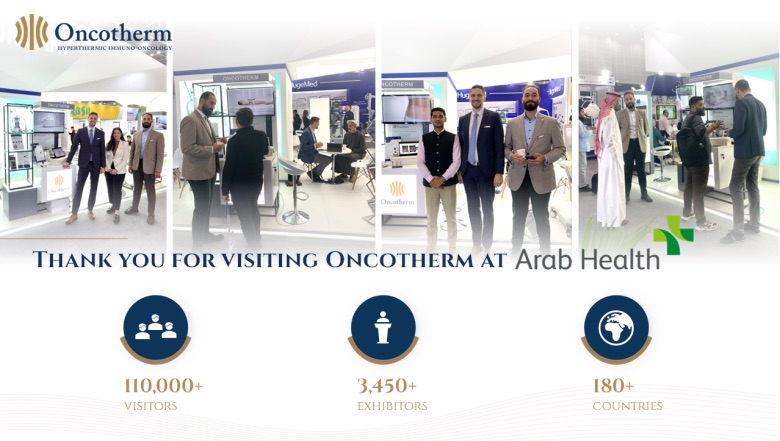Two articles related to the topic of Oncothermia were published. “Analysis of the effects of mEHT on the treatmentrelated toxicity and quality of life of HIV-positive cervical cancer patients” in International Journal of Hyperthermia and “Potentiation of the Abscopal Effect by Modulated Electro-Hyperthermia in Locally Advanced Cervical Cancer Patients” in Frontiers in Oncology.
We would like to congratulate to the authors!
Please find the abstracts below.
Review of “Analysis of the effects of mEHT on the treatmentrelated toxicity and quality of life of HIV-positive cervical cancer patients”
Authors: Carrie Anne Minnaar, Jeffrey Allan Kotzen, Thanushree Naidoo, Mariza Tunmer, Vinay Sharma, Mboyo-Di-Tamba Vangu & Ans Baeyens
ABSTRACT
Introduction: HIV infection is associated with increased treatment-related toxicity and worse outcomes in locally advanced cervical cancer patients (LACC), especially in resource-constrained settings. Local control (LC) in a phase III randomized, controlled trial investigating modulated electro-hyperthermia (mEHT) on LACC patients in South Africa (ethics registration: M120477/M190295), was significantly higher in participants randomized to receive chemoradiotherapy (CRT) with mEHT compared to CRT alone (stratum: HIV status, accounting for age and stage). This analysis investigates whether mEHT adds to the toxicity profile of CRT in HIV-positive LACC participants.
Methods: Inclusion criteria: signed informed consent; International Federation of Gynecology and Obstetrics stages IIB to IIIB squamous cell carcinoma of the cervix; HIV-positive patients: CD4 count >200 cell/mL/on antiretroviral treatment for >6 months; eligible for CRT with radical intent. Recruitment: January 2014 to November 2017 (ClinicalTrials.gov: NCT03332069). Acute toxicity (evaluated using CTCAE v4 criteria) and quality of life (according to EORTC forms) in 206 participants randomized for treatment were evaluated alongside the LC results to determine safety and efficacy in HIV-positive participants.
Results: Compliance to mEHT treatment was high (97% completed 8 treatments) with no significant differences in CRT-related toxicity between treatment groups or between HIV-positive and -negative participants. Adverse events attributed to mEHT were minor, even in obese patients, and did not affect CRT compliance. Participants treated with mEHT reported improved fatigue, pain, emotional and cognitive functioning.
Conclusion: mEHT did not cause unexpected CRT-related toxicities and is a safe treatment modality for HIV-positive patients, with minor limitations regarding body weight, even in a low-resource setting.
Review of “Potentiation of the Abscopal Effect by Modulated Electro-Hyperthermia in Locally Advanced Cervical Cancer Patients”
Authors: Carrie Anne Minnaar, Jeffrey Allan Kotzen, Olusegun Akinwale Ayeni, Mboyo-Di-Tamba Vangu and Ans Baeyens
ABSTRACT
Background: A Phase III randomized controlled trial investigating the addition of modulated electro-hyperthermia (mEHT) to chemoradiotherapy for locally advanced cervical cancer patients is being conducted in South Africa (Human Research Ethics Committee approval: M1704133; ClincialTrials.gov ID: NCT03332069). Two hundred and ten participants were randomized and 202 participants were eligible for six month local disease control evaluation. Screening 18F-FDG PET/CT scans were conducted and repeated at six months post-treatment. Significant improvement in local control was reported in the mEHT group and complete metabolic resolution (CMR) of extra-pelvic disease was noted in some participants. We report on an analysis of the participants with CMR of disease inside and outside the radiation field.
Method: Participants were included in this analysis if nodes outside the treatment field (FDG-uptake SUV>2.5) were visualized on pre-treatment scans and if participants were evaluated by 18F-FDG PET/CT scans at six months post-treatment.
Results: One hundred and eight participants (mEHT: HIV-positive n = 25, HIV-negative n = 29; Control Group: HIV-positive n = 26, HIV-negative n = 28) were eligible for analysis. There was a higher CMR of all disease inside and outside the radiation field in the mEHT Group: n = 13 [24.1%] than the control group: n = 3 [5.6%] (Chi squared, Fisher’s exact: p = 0.013) with no significant difference in the extra-pelvic response to treatment between the HIV-positive and -negative participants of each group.
Conclusion: The CMR of disease outside the radiation field at six months post-treatment provides evidence of an abscopal effect which was significantly associated with the addition of mEHT to treatment protocols. This finding is important as the combined synergistic use of radiotherapy with mEHT could broaden the scope of radiotherapy to include systemic disease.





